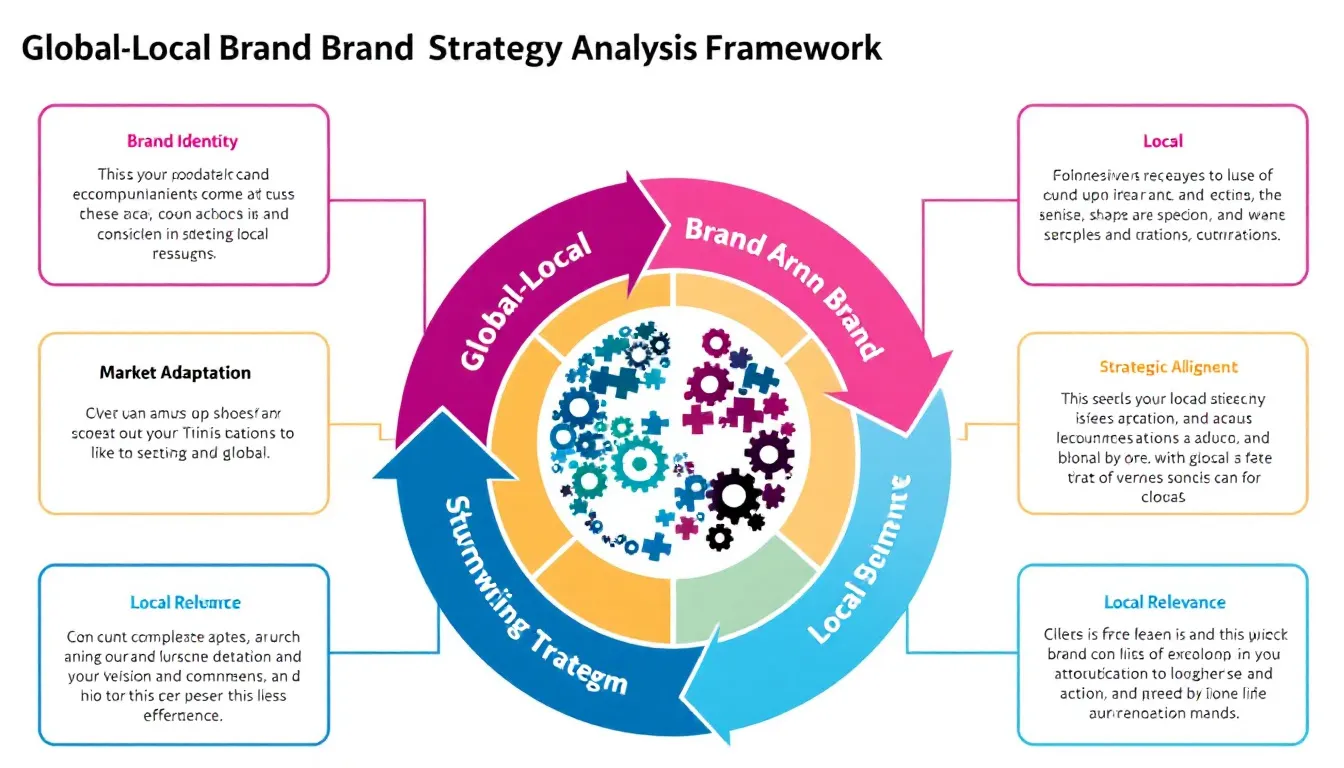Is this tool helpful?
How to Use the Global-Local Brand Strategy Analysis Tool Effectively
The Global-Local Brand Strategy Analysis Tool helps businesses evaluate and optimize their international brand positioning. Here’s a detailed guide on using each field effectively:
1. Brand Name Input
Enter the complete brand name you want to analyze. For example:
- Samsung Electronics
- Unilever
2. Key Markets List
List all significant markets where your brand operates, including both established and emerging markets. Example entries:
- North America (USA, Canada), Western Europe (UK, Germany, France), Asia Pacific (Japan, South Korea, Australia)
- BRIC markets (Brazil, Russia, India, China), MENA region, Southeast Asia (Indonesia, Thailand, Vietnam)
3. Global Strategy Description
Detail your current global brand positioning and strategy. Sample entries:
- Luxury automotive manufacturer focusing on sustainable mobility and electric innovation, targeting affluent environmentally-conscious consumers
- Mass-market FMCG brand emphasizing affordability and quality, with strong family-oriented messaging
4. Local Market Challenges
Describe specific market challenges. Example entries:
- Strong local competitors in Asian markets, different beauty standards across regions, varying regulatory requirements for product claims
- Price sensitivity in emerging markets, religious considerations affecting product formulation, local manufacturing requirements
5. Standardized Brand Elements
List globally consistent brand elements. Example entries:
- Visual identity system (logo, typography, color palette), brand purpose statement, sustainability commitments
- Core product formulations, quality standards, customer service protocols
Understanding Global-Local Brand Strategy Analysis
The Global-Local Brand Strategy Analysis Tool is a comprehensive solution for evaluating brand performance across international markets. It helps organizations strike the optimal balance between maintaining global brand consistency and adapting to local market needs.
Key Components of Analysis
- Brand Identity Evaluation
- Market Adaptation Assessment
- Strategic Alignment Review
- Local Market Relevance
- Implementation Effectiveness
Benefits of Using the Brand Strategy Analysis Tool
1. Strategic Clarity
Gain clear insights into your brand’s current positioning and identify areas for improvement across markets.
2. Market Optimization
Understand how to better adapt your global strategy to local market conditions while maintaining brand integrity.
3. Resource Efficiency
Optimize resource allocation between global and local marketing initiatives based on data-driven insights.
4. Competitive Advantage
Identify opportunities to differentiate your brand in specific markets while maintaining global brand strength.
Practical Applications and Problem-Solving
Case Study 1: Global Technology Brand
A technology company used the tool to analyze its presence in 15 markets, revealing:
- Opportunity to localize product features while maintaining global design language
- Need for market-specific pricing strategies in emerging markets
- Potential for local partnerships to enhance market penetration
Case Study 2: International Fashion Retailer
Analysis revealed:
- Necessity to adapt sizing standards for different regions
- Opportunity to incorporate local design elements while maintaining global brand aesthetic
- Need for market-specific social media strategies
Implementation Strategies
1. Global Brand Framework
Establish core brand elements that remain consistent globally:
- Brand purpose and values
- Visual identity basics
- Quality standards
- Customer experience principles
2. Local Market Adaptation
Identify elements that can be customized:
- Marketing messages
- Product variants
- Pricing strategies
- Distribution channels
Best Practices for Global-Local Brand Management
1. Cultural Sensitivity
Ensure brand elements respect local customs and values while maintaining global appeal.
2. Market Research Integration
Continuously gather and incorporate local market insights into strategy development.
3. Stakeholder Alignment
Maintain clear communication between global and local teams to ensure strategy consistency.
Frequently Asked Questions (FAQ)
Q: How often should I conduct a global-local brand strategy analysis?
A: It’s recommended to conduct a comprehensive analysis annually, with quarterly reviews of key metrics and market changes.
Q: What are the key indicators of successful global-local brand balance?
A: Key indicators include brand recognition scores, market share growth, customer satisfaction levels, and local market engagement metrics.
Q: How can I ensure consistent brand execution across markets?
A: Implement clear brand guidelines, regular training programs, and establish a global brand governance structure with local market representation.
Q: What role does digital presence play in global-local brand strategy?
A: Digital channels require careful balance between global content frameworks and local market customization to ensure relevant, engaging experiences.
Q: How can I measure the effectiveness of local market adaptations?
A: Track key performance indicators including market share, brand equity metrics, customer feedback, and sales performance relative to local competitors.
Strategic Considerations for Different Market Types
1. Mature Markets
Focus on:
- Brand differentiation
- Innovation leadership
- Premium positioning
- Digital integration
2. Emerging Markets
Consider:
- Market education
- Value proposition adaptation
- Distribution network development
- Local partnership opportunities
3. Developing Markets
Prioritize:
- Brand awareness building
- Market penetration strategies
- Local consumer understanding
- Infrastructure development
Important Disclaimer
The calculations, results, and content provided by our tools are not guaranteed to be accurate, complete, or reliable. Users are responsible for verifying and interpreting the results. Our content and tools may contain errors, biases, or inconsistencies. We reserve the right to save inputs and outputs from our tools for the purposes of error debugging, bias identification, and performance improvement. External companies providing AI models used in our tools may also save and process data in accordance with their own policies. By using our tools, you consent to this data collection and processing. We reserve the right to limit the usage of our tools based on current usability factors. By using our tools, you acknowledge that you have read, understood, and agreed to this disclaimer. You accept the inherent risks and limitations associated with the use of our tools and services.







